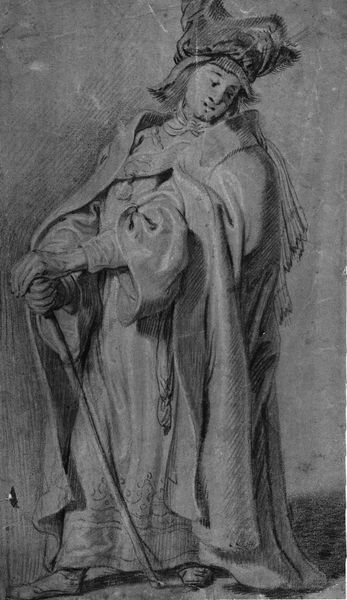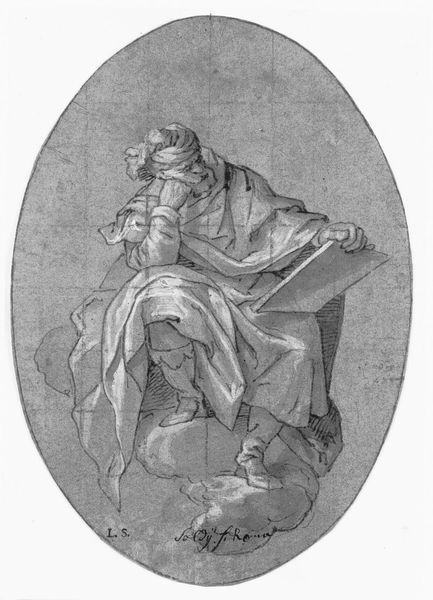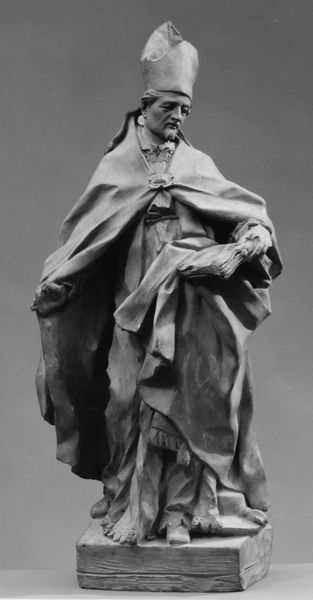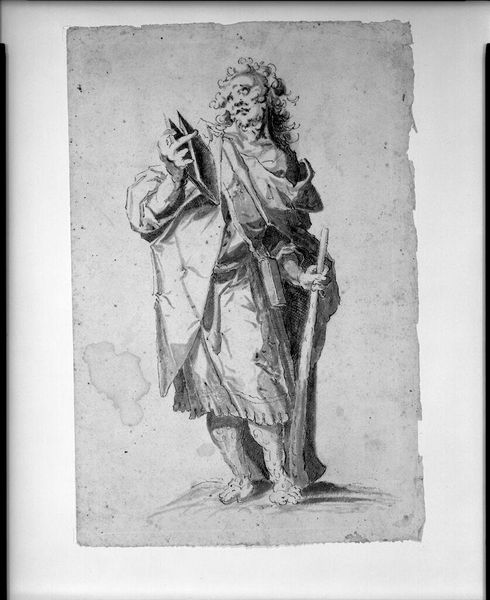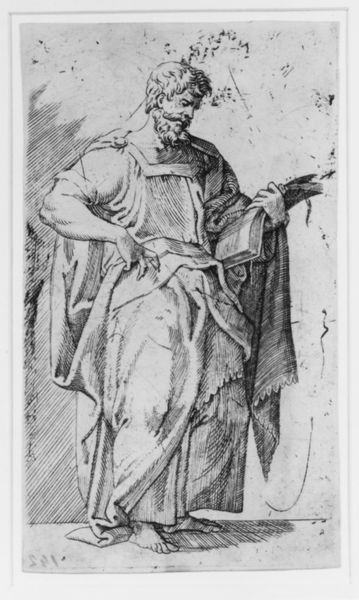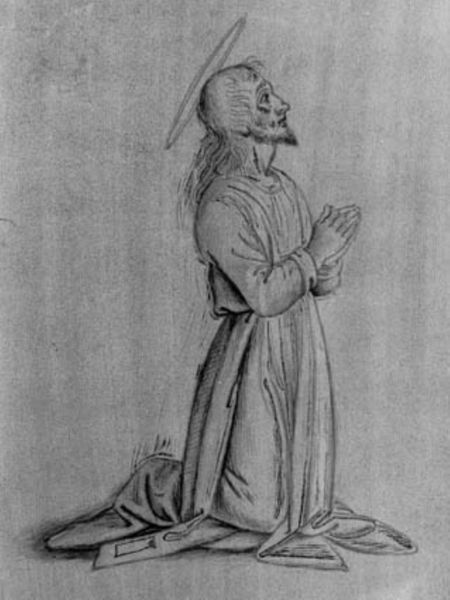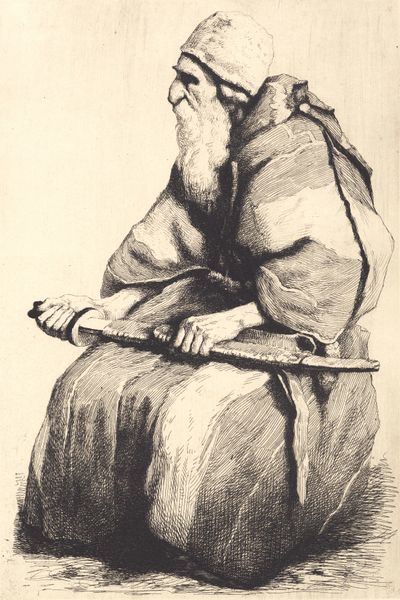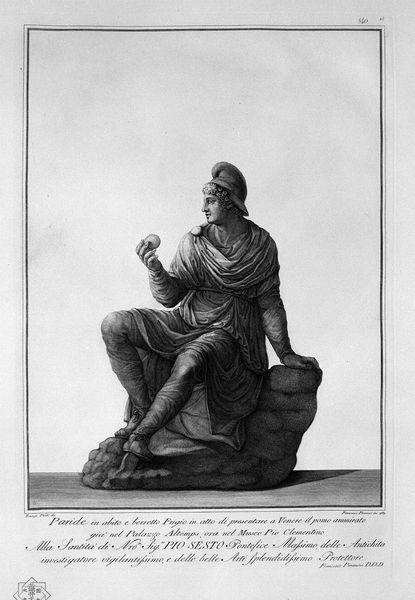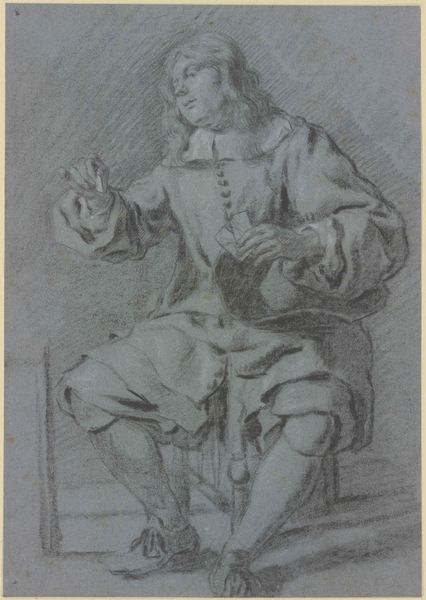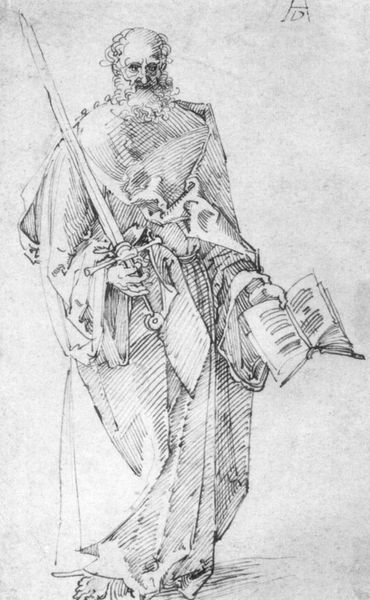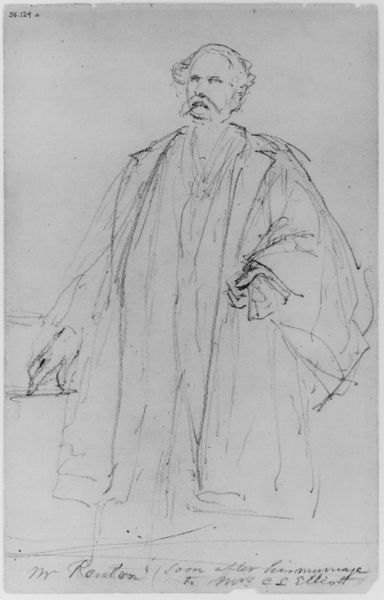
Copyright: Public domain
Editor: This is Albrecht Dürer’s "Kneeling Apostle," a charcoal drawing from 1508. I’m struck by the somber mood and how the textures almost feel palpable. How do you interpret this work, especially considering its historical context? Curator: I see this drawing as Dürer grappling with faith and societal expectations within the tumultuous era of the Reformation. Notice the apostle's worn face, the weight of his robes. Consider, how might his kneeling represent both piety and perhaps a form of subjugation within a hierarchical religious system? Editor: Subjugation? That's an interesting perspective. I mainly saw devotion, but now I am curious to learn more about the tension of that era! Curator: Dürer, positioned at the cusp of massive religious upheaval, was likely contemplating individual conscience versus institutional authority. How might this image speak to later eras wrestling with similar conflicts around religious and political freedom? Editor: It’s almost like the figure is pointing to something beyond the confines of the drawing, to a future of change! Does that link with the German Expressionism tag assigned to this artwork? Curator: The emotional intensity definitely resonates with later expressionist concerns. However, German Expressionism typically reflects an inner subjective state of angst, while Dürer's work often embeds itself more explicitly in religious and social discourse. Editor: Ah, that distinction makes sense! I see the nuances now, the historical and social layering adds so much depth. Curator: Precisely! Art isn't just about aesthetics; it’s about the complex conversations between the artwork, the artist, and the world it inhabits, and the world that comes after it too. Editor: Thanks for the deep dive, I learned a lot.
Comments
No comments
Be the first to comment and join the conversation on the ultimate creative platform.
